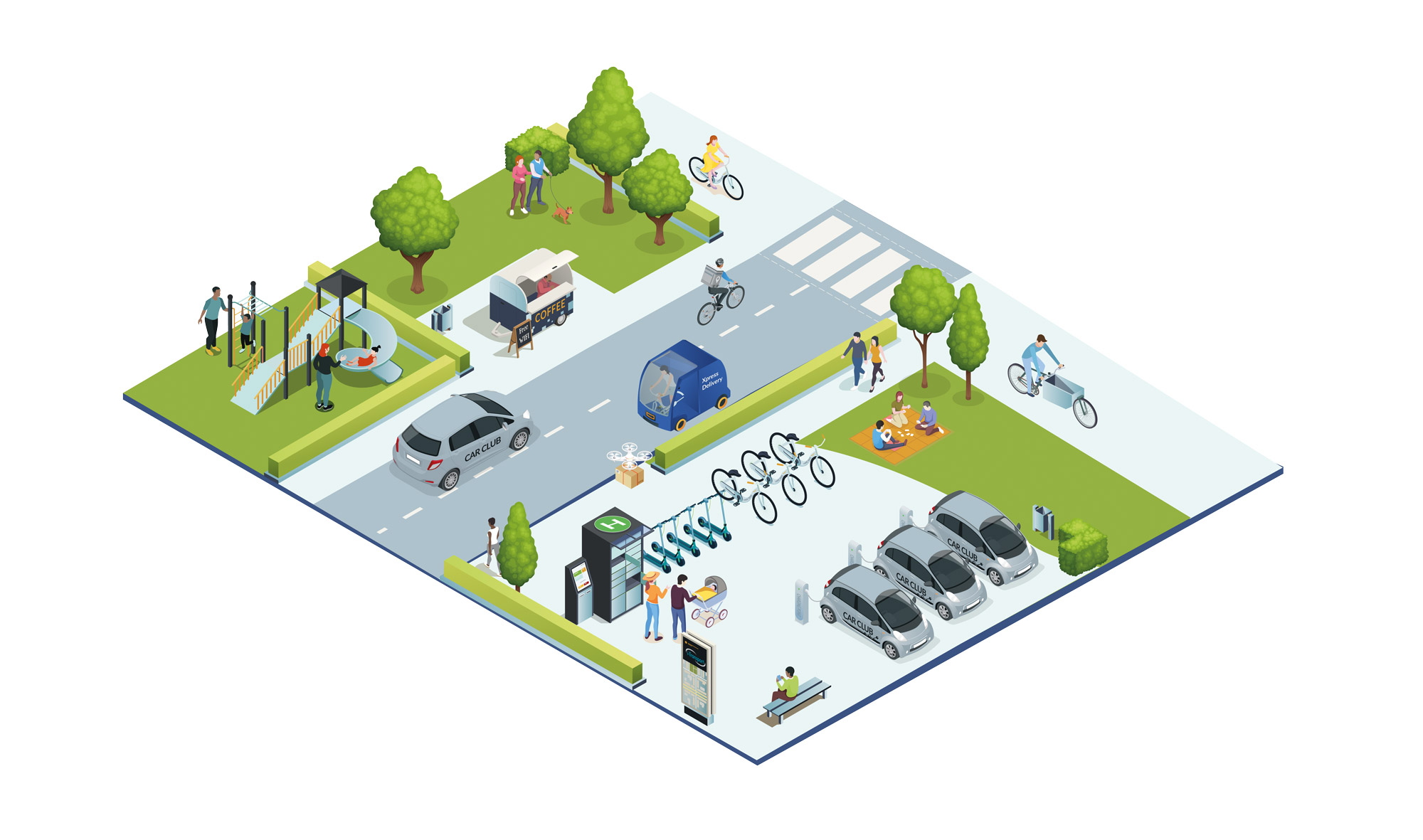Sustainable transport movements
Kidlington to Cutteslowe Cycle Infrastructure improvements
In conjunction with Oxfordshire County Council (OCC) we are investigating ways in which the segregated pedestrian and cycle superhighway can be continued along the Oxford Road between the Kidlington roundabout and the Park and Ride and then between the southern site boundary and Cutteslowe roundabout. A range of designs are being considered to provide additional cycle infrastructure around and through the Cutteslowe roundabout itself. This will deliver a fully segregated route between and inclusive of the two junctions within existing highway limits, through reallocation of footway, verges and carriageway.
As the first phase of this route, OCC have recently consulted on proposals to improve the infrastructure at Kidlington Roundabout, introducing new segregated cycle lanes around the roundabout and controlled crossings for pedestrians and cyclist over Oxford Road, Frieze Way and Bicester Road. These improvements will be enabled by growth funding which has already been secured. As an interim measure, the existing temporary amendments to the Park and Ride junction will be made permanent ahead of wider improvements associated with the Oxford road corridor.
These measures, which will be delivered by OCC via a contribution secured through the S106 legal agreement will improve cycle safety for all users along the Oxford Road / Banbury Road corridor between Kidlington and the City Centre.

Click image to enlarge Pinch image to enlarge

Click image to enlarge Pinch image to enlarge
Parking
Parking will be provided having regard to the recently adopted Oxfordshire County Council Parking Standards, reflecting the wider transport strategy and sustainable location of the site.
Some parts of the site may be designated as car free and to deter antisocial parking or parking occurring indiscriminately, while controlled parking zones will also be considered. Parking provision will however be at a level that ensures that demand is catered for on site, without any overspill outside of the site.
While accessing the primary school by car will be discouraged, a park and stride will be provided for those that have to drive, utilising the car park at the local centre. Car clubs are also proposed as a way to reduce the need for car ownership.
Traffic Model
A comprehensive traffic modelling exercise has been undertaken to assess the impacts of the development and the performance of the road network in the future
It has been undertaken in collaboration with OCC and the other PR sites and considers all committed and planned development up to 2031.
The model considers the weekday peak periods (06:30 – 10:30 and 14:30 – 18:30) and considers all modes of travel and not just vehicular traffic.
The 2031 future year model runs consider all of proposed infrastructure identified in the Local Plan Infrastructure Development Plan (IDP), designed to encourage modal shift. This includes a new park and ride at the airport, the delivery of strategic cycle corridors, improved bus frequency and bus infrastructure and pedestrian improvements.
The modelling results show that the transport network will perform acceptably with the residual cumulative impacts falling short of the severe test set in the Nation Planning Policy Framework (NPPF), which the application is judged against.

Click image to enlarge Pinch image to enlarge
Travel Plan and Mobility Hubs
A Travel Plan and Mobility Strategy are being developed to promote and deliver sustainable transport initiatives e.g. walking, cycling, public transport to reduce the demand for travel by less sustainable modes.
The masterplan allows for mobility hubs to be developed within the site. These will act as interchange points between modes of transport and could include amongst other things, space for ebikes, escooters, car club vehicles, delivery lockers and EV charging (cars and bikes).

Click image to enlarge Pinch image to enlarge
Oxfordshire County Council’s Innovation Framework
The planning submission will be supported by an Innovation Plan in line with OCC’s Innovation Framework guidance. The innovation plan will set out how the delivery of the site will accord with Innovation Framework principles.
Early consideration of how the site can be futureproofed will allow for decisions to be made on how innovations can be added into the site design as and when they become mainstream. An example of this may be designing in space for micromobility or mobile connectivity.
Our proposals sections
- Introduction
- Our proposals
- The development
- The scheme parameters
- Masterplan
- Character and placemaking
- Responsible ownership & stewardship
- A sustainable development
- Transport
- Sustainable transport improvements
- Green infrastructure
- Site heritage
- Ground conditions and utilities
- Ecology and biodiversity
- Landscape and visual